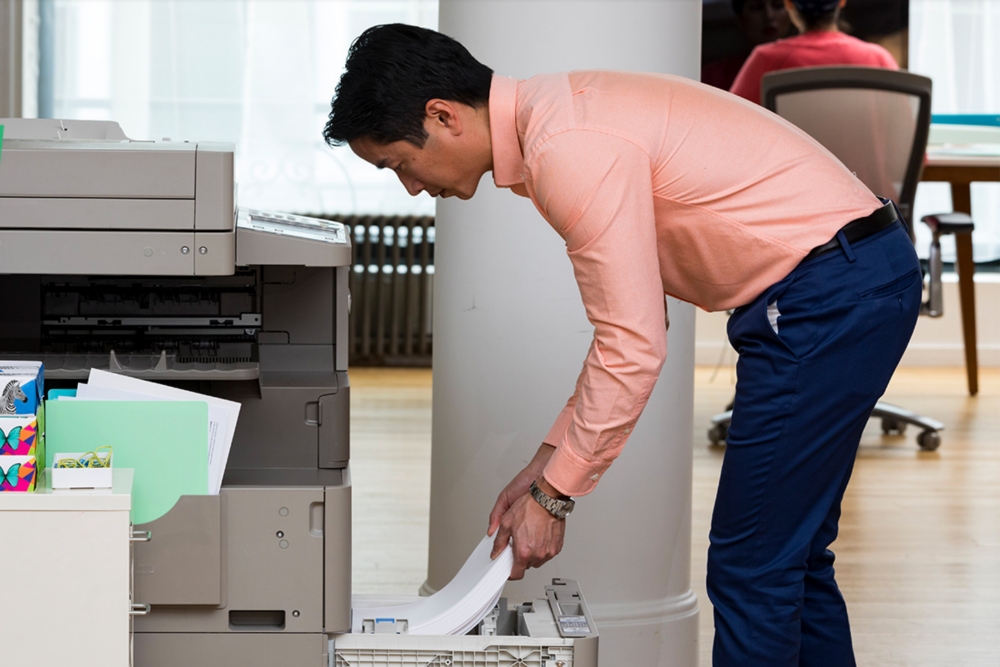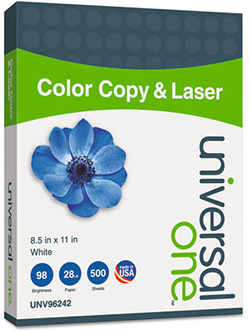
Not that long ago industry experts predicted that the arrival of a paperless office was near. With the rise of emerging technologies like cloud storage, document management and e-versions of every book and magazine out there it made sense at the time. But the reality is printing hasn’t reduced at all; we’re actually consuming more paper than ever.
What about the environment you may ask. Isn’t printing that much bad for it? The print industry, in fact, is not only environmentally friendly but also sustainable. The print industry puts a lot of work into applying renewable energy sources and creating eco-friendly supplies. Much so that 70% of today’s ads and direct mail are printed on recycled paper and the print industry plants 3 times more trees than it cuts.

How To Choose The Correct Paper For Your Needs
So now that we’ve cleared the air on printing being obsolete or bad for the environment, the real question becomes, “what kind of paper do I buy?” There are hundreds of paper brands, many different sizes, colors and weights so it can be confusing to determine which paper is going to be the best for you and your printer. There are a few criteria to consider including brightness, opacity, weight and texture. Let’s explain brightness and weight in more detail.
Brightness
The brightness of the paper is how white or reflective it is. A cheaper commercial paper will have less contrast, meaning the paper is off-white and the blacks will not be as dark as they should. For everyday black and white prints and copies we recommend 92 brightness, and for higher quality color prints and copies 98 brightness is ideal.
Weight
The weight refers to how heavy or thick the paper is. A thicker paper shows quality, while a thin paper will have translucency and will show through. The average weight for copy paper is 20lbs. It’s important to have the proper settings turned on your machine when printing from heavier paper. Download our paperweight chart to determine the proper paper setting. For example if you’re using 80lb cover stock, the settings will need to be changed on your copier as “Heavy Paper 2”. Visit this online tool to convert pounds to gsm. To schedule training on properly adjusting the print settings on your machine contact us and we’ll be happy to assist you.

The best paper for everyday use – A multipurpose, 92 brightness, 20 lb copy paper: UNV-21200
The best paper for laser & inkjet printers – An acid-free, 98 brightness, 28 lb color copy paper: UNV-96242
Printing Tips To Save Money
- Print your rough drafts on your less expensive copy paper and your finals on good quality paper.
- For multi-page documents that don’t need to be full size, change the output to multi-page and you can print 1, 2, or 4 pages on a single sheet of paper.
- For larger print jobs, consider changing the setting to double-sided to save paper.
- Recycled paper does not mean reusing paper that’s already passed through your machine. Used paper can curl, which leads to jams and paper misfeeds.
- Paper can last 2-3 years if stored properly. To reduce the amount of waste and service calls from damp paper that causes jams, store the unopened copy paper in a cool, dry place.
Remember the paper you choose can say a lot about you. Choose a lower quality paper to print a report for a colleague and you’re saying, “I don’t really care about this document or the communication from it.” Choosing the proper paper for a specific job shows that time and thought went into it and as a result makes you and your company look professional.
For more questions about choosing the right paper for your organization reach out to our Service Support Staff.
Source: http://printisbig.com/
For more printing tips and tricks see:
| Creating an Intelligent Print Environment |